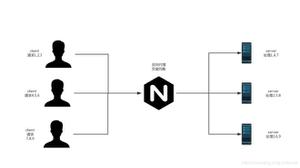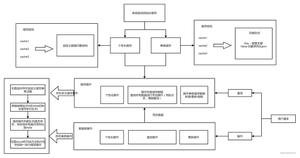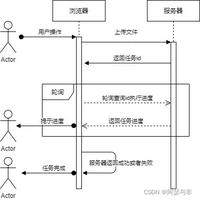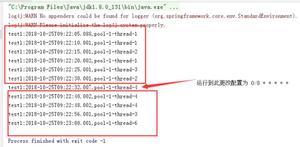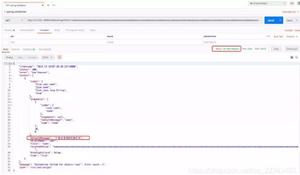SpringBoot事务注解详解
本文内容纲要:
- 3.指定事务管理器@Transactional
spring 事务注解
1.简单开启事务管理
@EnableTransactionManagement // 启注解事务管理,等同于xml配置方式的 <tx:annotation-driven />2.事务注解详解
默认遇到throw new RuntimeException(“…”);会回滚
需要捕获的throw new Exception(“…”);不会回滚
指定回滚
@Transactional(rollbackFor=Exception.class) public void methodName() {
// 不会回滚
throw new Exception("...");
}
指定不回滚
@Transactional(noRollbackFor=Exception.class) public ItimDaoImpl getItemDaoImpl() {
// 会回滚
throw new RuntimeException("注释");
}
如果有事务,那么加入事务,没有的话新建一个(不写的情况下)
@Transactional(propagation=Propagation.REQUIRED)容器不为这个方法开启事务
@Transactional(propagation=Propagation.NOT_SUPPORTED)readOnly=true只读,不能更新,删除
@Transactional (propagation = Propagation.REQUIRED,readOnly=true)设置超时时间
@Transactional (propagation = Propagation.REQUIRED,timeout=30)设置数据库隔离级别
@Transactional (propagation = Propagation.REQUIRED,isolation=Isolation.DEFAULT)3.指定事务管理器
spring Boot 使用事务非常简单,首先使用注解 @EnableTransactionManagement 开启事务支持后,然后在访问数据库的Service方法上添加注解 @Transactional 便可。
关于事务管理器,不管是JPA还是JDBC等都实现自接口 PlatformTransactionManager 如果你添加的是 spring-boot-starter-jdbc 依赖,框架会默认注入 DataSourceTransactionManager 实例。如果你添加的是 spring-boot-starter-data-jpa 依赖,框架会默认注入 JpaTransactionManager 实例。
你可以在启动类中添加如下方法,Debug测试,就能知道自动注入的是 PlatformTransactionManager 接口的哪个实现类。
3.1 打印项目事务管理器
@EnableTransactionManagement // 启注解事务管理,等同于xml配置方式的 <tx:annotation-driven />@SpringBootApplication
public class ProfiledemoApplication {
@Bean
public Object testBean(PlatformTransactionManager platformTransactionManager){
System.out.println(">>>>>>>>>>" + platformTransactionManager.getClass().getName());
return new Object();
}
public static void main(String[] args) {
SpringApplication.run(ProfiledemoApplication.class, args);
}
}
这些SpringBoot为我们自动做了,这些对我们并不透明,如果你项目做的比较大,添加的持久化依赖比较多,我们还是会选择人为的指定使用哪个事务管理器。
代码如下:
3.2 指定事务管理器
@EnableTransactionManagement@SpringBootApplication
public class ProfiledemoApplication {
// 其中 dataSource 框架会自动为我们注入
@Bean
public PlatformTransactionManager txManager(DataSource dataSource) {
return new DataSourceTransactionManager(dataSource);
}
@Bean
public Object testBean(PlatformTransactionManager platformTransactionManager) {
System.out.println(">>>>>>>>>>" + platformTransactionManager.getClass().getName());
return new Object();
}
public static void main(String[] args) {
SpringApplication.run(ProfiledemoApplication.class, args);
}
}
在Spring容器中,我们手工注解@Bean 将被优先加载,框架不会重新实例化其他的 PlatformTransactionManager 实现类。
然后在Service中,被 @Transactional 注解的方法,将支持事务。如果注解在类上,则整个类的所有方法都默认支持事务。
对于同一个工程中存在多个事务管理器要怎么处理,请看下面的实例,具体说明请看代码中的注释。
3.1 使用指定的事务管理器
@EnableTransactionManagement // 开启注解事务管理,等同于xml配置文件中的 <tx:annotation-driven />@SpringBootApplication
public class ProfiledemoApplication implements TransactionManagementConfigurer {
@Resource(name="txManager2")
private PlatformTransactionManager txManager2;
// 创建事务管理器1
@Bean(name = "txManager1")
public PlatformTransactionManager txManager(DataSource dataSource) {
return new DataSourceTransactionManager(dataSource);
}
// 创建事务管理器2
@Bean(name = "txManager2")
public PlatformTransactionManager txManager2(EntityManagerFactory factory) {
return new JpaTransactionManager(factory);
}
// 实现接口 TransactionManagementConfigurer 方法,其返回值代表在拥有多个事务管理器的情况下默认使用的事务管理器
@Override
public PlatformTransactionManager annotationDrivenTransactionManager() {
return txManager2;
}
public static void main(String[] args) {
SpringApplication.run(ProfiledemoApplication.class, args);
}
}
@Component
public class DevSendMessage implements SendMessage {
// 使用value具体指定使用哪个事务管理器
@Transactional(value="txManager1")
@Override
public void send() {
System.out.println(">>>>>>>>Dev Send()<<<<<<<<");
send2();
}
// 在存在多个事务管理器的情况下,如果使用value具体指定
// 则默认使用方法 annotationDrivenTransactionManager() 返回的事务管理器
@Transactional
public void send2() {
System.out.println(">>>>>>>>Dev Send2()<<<<<<<<");
}
}
本文内容总结:3.指定事务管理器,
原文链接:https://www.cnblogs.com/kesimin/p/9546225.html
以上是 SpringBoot事务注解详解 的全部内容, 来源链接: utcz.com/z/296252.html

